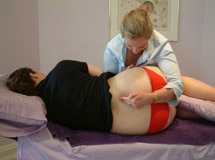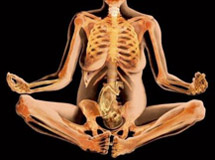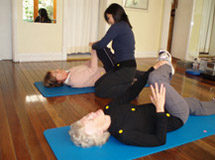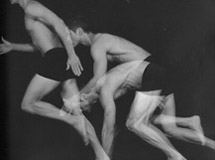Looking after Mum through her pregnancy and after her delivery
Pregnancy is a unique and special time for a woman as she watches her body change and becomes aware of the child that grows inside her. For most women pregnancy and childbirth is a positive experience and the changes occur without pain or dysfunction in the body. However for some women, the hormonal changes that occur during and after pregnancy or the strain of childbirth itself, can create low back pain, pelvic or sacro-iliac joint symptoms, or rib cage/ chest pains that leaves mum struggling to cope with looking after her newborn. Mums can also struggle with Urinary Incontinence, Diastis Rectus Abdominis (Seperation of the linea alba), pelvic organ prolapses that continue well after delivery if not assessed and treated well
The Physiotherapists at Sydney Spine and Pelvis Centre have particular expertise in treatment of injuries related to pregnancy and after baby has been delivered:
- Pelvic girdle pain during and after pregnancy including low back & sacroiliac joint pain, groin pain, and pubic symphysitis
 Click here for a fact sheet (123.46 KB)
Click here for a fact sheet (123.46 KB) - Increased mobility of the sacroiliac joint and pubic symphysis associated with loss of lumbo-pelvic stability
- Pelvic floor dysfunction and bladder incontinence
- Acute Mastitis and clearing blocked milk ducts
- Coccydinia and vulvadinia/ pain with intercourse
- Neck and upper back pain
- Diastisis rectus abdominis
- Checking core, pelvic floor and abdominal muscle control so you know you are safe to return to exercise
- Pelvic organ prolapse assessment & exercise prescription
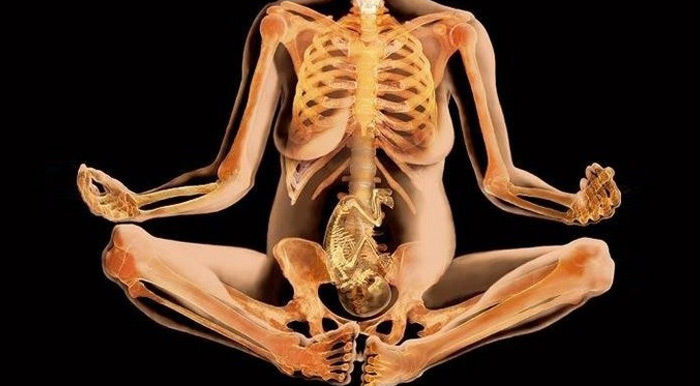
1. Pelvic Girdle Pain and Loss of Lumbo-Pelvic Stability Related to Pregnancy
It is normal for the womans' hormones to change during pregnancy in anticipation of a natural birth and it is not uncommon for pregnant women to notice a feeling of increased movement in the pelvic joints (the pubic symphysis and or the sacroiliac joints) at the times when the relaxin levels are high. This is because this hormone in conjunction with progesterone, increases the water holding capacity of the ligaments surrounding these joints which in turn means increased joint mobility. Movement at these joints is normally very small, but the relative increase in mobility can become irritating and produce pain and inflammation.
There are a couple of ways to lessen the effect of increased pelvic mobility during pregnancy:
- A sacroiliac or pelvic belt
- Specific training of pelvic floor, transverse abdominis (deep tummy muscles) and multifidus (deep back) muscles. Research has shown that these muscles deep within the abdomen and pelvis help to support the pubic symphysis and sacroiliac joints and these muscles can be retrained to improve your pelvic stability.
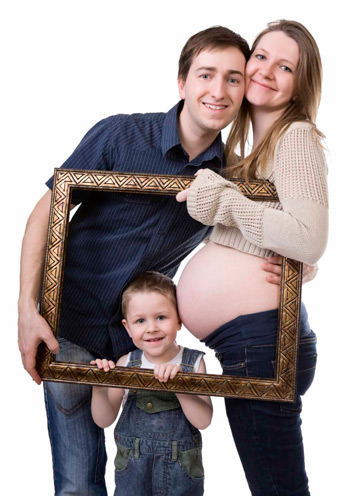
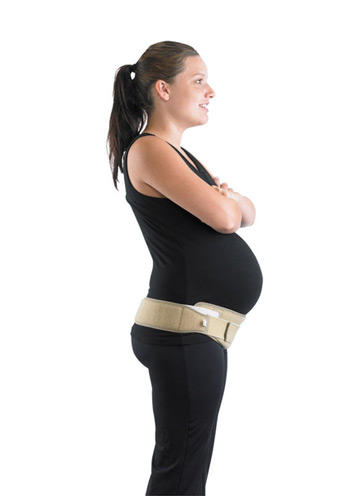
2. Low Back and Pelvic Pain Following Child Birth
Occasionally the extra mobility at the pubic symphysis and sacroiliac joint can leave the pelvic joints vulnerable to injury such as might occur from a fall, slipping or lifting. This can result in low back, pelvic and or buttock pain that are often made worse with sitting, standing, and bending. This injury requires specific treatment. At Sydney Spine & Pelvis Centre we are well known for our approach to treating this type of injury and we even train other physiotherapists and doctors about the treatment we do. We combine specific assessment of the lumbo-pelvic region and treatment with muscle energy techniques, myo-fascial releases and specific lumbo-pelvic stability exercises to restore normal pelvic function and ease your pain.
After child birth the deep tummy and pelvic floor muscles are hard to turn on, and their activation is often less effective than normal due to the birthing process or caesarian section. This means that without specific retraining of these muscles after child birth, a womans low back and pelvic area may not have sufficient stability to cope with the loads put onto it when walking, lifting her child, sitting or exercising.
She may develop a number of symptoms:
- Low back, pelvic pain or leg pain
- Pain at the pubic symphysis or groin with walking or lifting
- Urinary incontinence (either stress or urgency incontinence)
- Difficulty getting the abdominal or pelvic floor muscles to turn on
3. Neck and Upper Back Pain
Neck pain and upper back pain commonly occur after childbirth due to:
- Increased breast weight and poor posture during breastfeeding
- Repetitive lifting and carrying of the new baby
- Strain on the thoracic spine and rib cage as the child grows
At Sydney Spine and Pelvis Centre we assess the neck, thoracic spine and the rib cage to determine the most appropriate treatment protocol and exercise regime.

